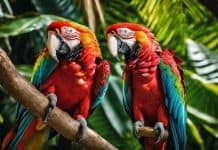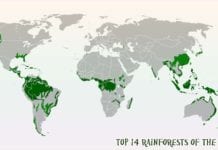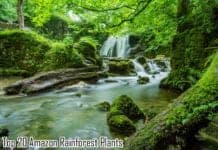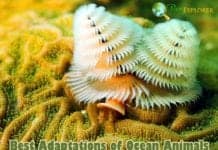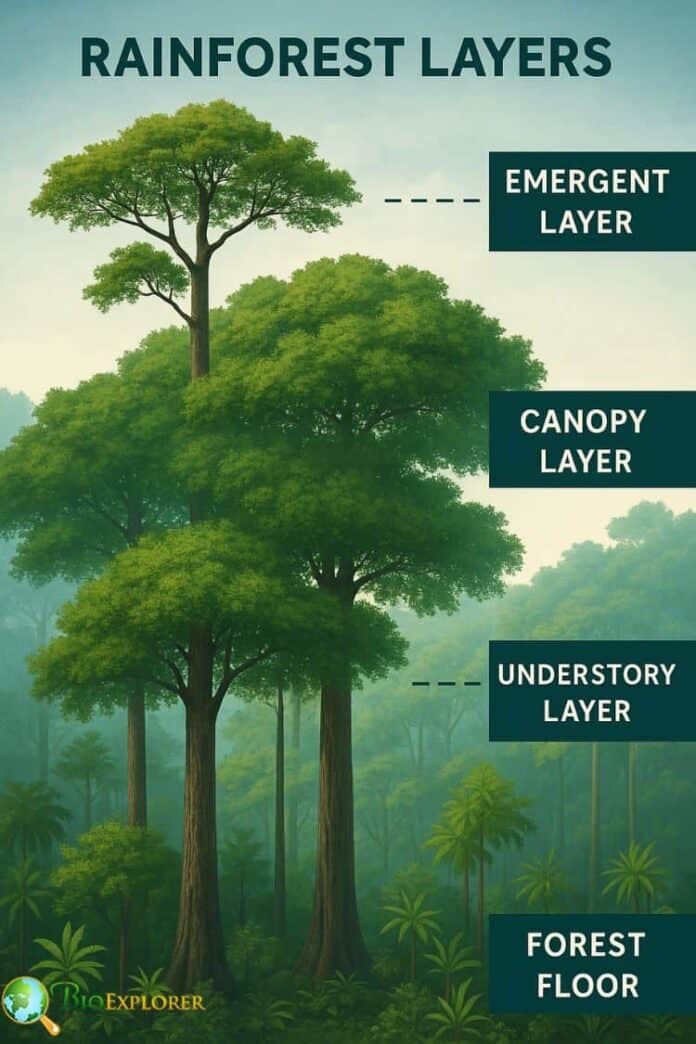
Layers of the rainforest: Among all biomes, tropical rainforests are considered to have the highest biodiversity. About 40 to 100 types of trees can already be found in a hectare plot of tropical rainforest land. Aside from this, the tropical rainforest biome is home to the most common species of the rarest organisms on our planet.
The world’s tropical rainforests are located in the warmest yet wettest places in the world (i.e., a place close to the equator). Such conditions make these places ideal environments for life. The tropical rainforest is a complete environment from top to bottom.
In general, it is divided into four layers: emergent layer, canopy layer, understory, and the forest floor. These layers host several species of tropical animals and tropical plants. Learn more about these layers below.
Table of Contents
Layers of the Rainforest
1. Emergent Layer
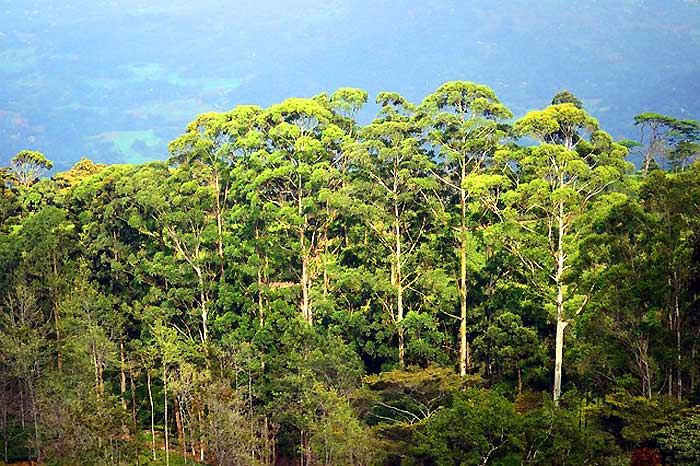
The first layer of tropical rainforest from the top is called the emergent layer. The emergent layer consists of towering trees (taller than most trees in the forest) that protrude from the rest of the plants in the area. The average height is about 70-100m from the ground level.
- It can be inferred that trees in the emergent layer tend to experience extreme environmental conditions. Being at the top means they receive direct heat from the sun, causing them to dry out constantly. Rains and winds also tend to strain them out. Fluctuations in temperature, from high temperatures during the day to extremely cold ones at night, have also torn them down.
- To adapt to these conditions, trees develop small yet very tough leaves coated with thick wax that can help withstand them. Meanwhile, plants and animals should adapt to the bright sun rays and strong winds to grow in the emergent layer.
- Another adaptation exhibited by animals living in the emergent layer is their small sizes. Many branches in the tree canopy are thin and cannot support heavy weights; therefore, animals that live there are usually the flying and the gliding ones.
Animals in Emergent Layer
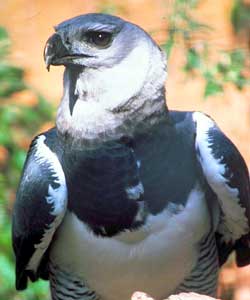 Common animals in the emergent layer are birds (such as Harpy Eagles, Scarlet Macaw, White Cockatoos, etc.) bats, some insects, pygmy gliders, rainforest monkeys (such as capuchin monkeys, squirrel monkeys, etc.) and morpho butterflies (blue colored ones).
Common animals in the emergent layer are birds (such as Harpy Eagles, Scarlet Macaw, White Cockatoos, etc.) bats, some insects, pygmy gliders, rainforest monkeys (such as capuchin monkeys, squirrel monkeys, etc.) and morpho butterflies (blue colored ones).
The trees found in this layer take huge advantage of the heights they are in. Because they are in the most openly spaced area in the forests, these trees tend to spread their leaves out to get sunlight as much as possible.
![]()
2. Canopy Layer
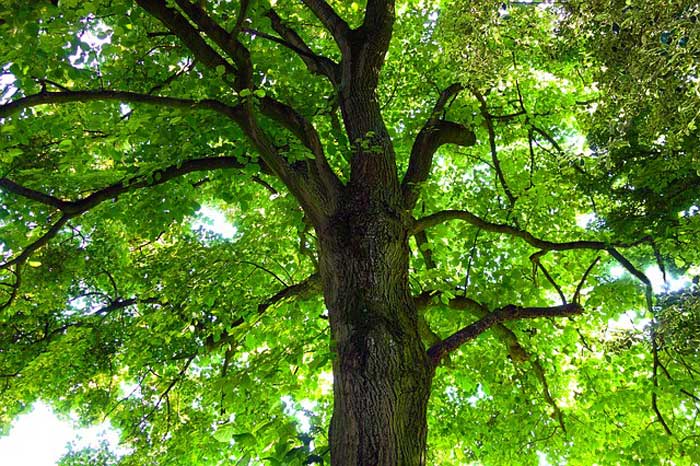
The next layer is the canopy layer, which is known to contain the majority (about 60 to 90%) of living species in the whole rainforest. The canopy layer, about 100 feet above the ground, contains overlapping tall trees that act as a roof over the other organisms below them.
- The conditions of this layer are different from the rest of the other layers. During the daytime, the canopy layer becomes the hottest part. Another thing is that due to the overlapping trees and leaves, even organisms of the same species find it hard to see each other. Hence, they developed adaptations like loud calls and sounds to communicate.
- Like in the emergent layers, animals capable of flying and gliding are also present here.
Animals in Canopy Layer
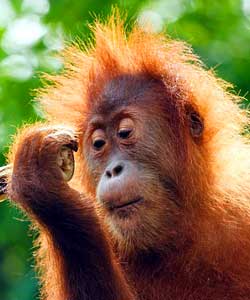 As Canopy layer is rich with fruits and nuts, organisms such as insects, various species of birds, lizards, monkeys (such as Bornean Orangutan), rodents, and tree frogs thrive in here. Almost 90% of rainforest animal species are believed to reside in this rainforest layer.
As Canopy layer is rich with fruits and nuts, organisms such as insects, various species of birds, lizards, monkeys (such as Bornean Orangutan), rodents, and tree frogs thrive in here. Almost 90% of rainforest animal species are believed to reside in this rainforest layer.
The leaves of the canopy layer can be likened to mini-solar panels that act as a source of power for the whole rainforest. These leaves do this by converting sunlight into useful energy form through the process of photosynthesis. Because of this, the rate of photosynthesis is very high that these plants get higher yields, too.
![]()
3. Understory
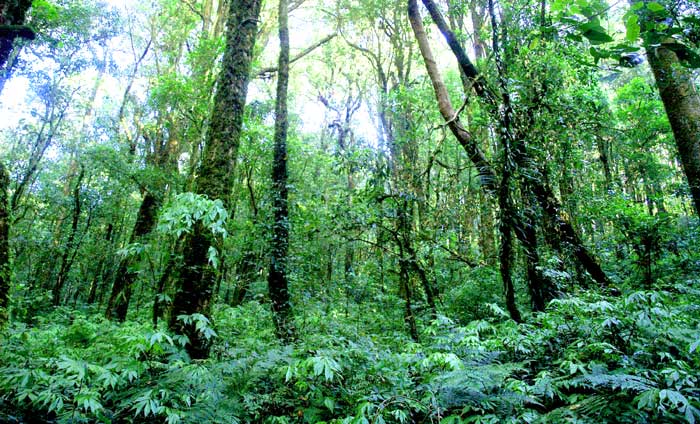
As compared to the first two layers, the understory is rather more humid and damp. The humidity level is what keeps the animals in this layer alive.
- The understory, also called the strata, is composed of shrubs, herbaceous plants, ferns, climbing plants, and young trees that are well adapted to areas receiving low sunlight.
- The tree trunks in this layer come in various shapes, sizes, thicknesses, and textures. Also, these trunks come in many colors because of the presence of lower plants like mosses, lichens, and fungi that are attached to the trunks and branches of trees.
- Climbing plants and vines are also concentrated in this layer. These plants first germinate on the Forest floor and begin to “climb” up by using a host plant until they reach the point where enough sunlight is present.
- In this layer of the rainforests, insects are most likely to be found. And because little to no seasonal changes occur in this layer, insects like mosquitoes can successfully breed all year long.
Animals in Understory Layer
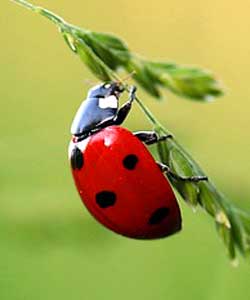 Organims in understory layer include insects, bees, beetles, butterflies, birds, geckos, bats, monkeys, snakes, lizards, jaguars and tree frogs. Birds and geckos prey on insects, and snakes prey on small mammals.
Organims in understory layer include insects, bees, beetles, butterflies, birds, geckos, bats, monkeys, snakes, lizards, jaguars and tree frogs. Birds and geckos prey on insects, and snakes prey on small mammals.
The understory is a dark environment with only about 2 to 15% sunlight. Hence, organisms in this layer have adapted to tolerate the low amount of sunlight.
![]()
4. Forest Floor
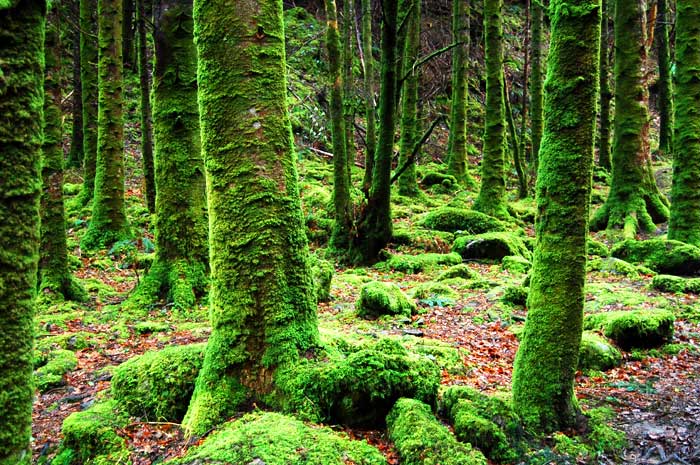
Last but not the least is the Forest floor layer. This layer is often described as the darkest and most humid layer of a tropical rainforest, receiving less than 2% of the total sunlight.
- The Forest floor receives all fallen leaves, twigs, branches, fruits, and seeds from the three layers above it. All these materials, coupled with the hot and humid weather, allow quick decomposition, making the forest floor the most nutrient-rich layer of all.
- The decomposition process is facilitated by different bacteria and fungi that break down materials and recycle the nutrients.
- The forest floor is where large terrestrial animals can be found because of its location.
Animals in Forest Floor
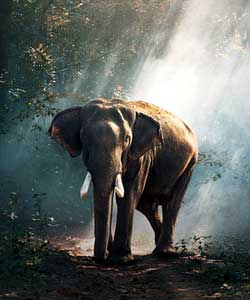 Animals in the forest floor are the tigers, Jaguars, elephants, and tapirs. Another example is the bearded pigs. They scour the ground for everything that has fallen on the forest floor, including fallen fruits, fungi, and carrion. In a way, they help to spread the tree density in the rainforest by dropping the seeds via their feces/dung.
Animals in the forest floor are the tigers, Jaguars, elephants, and tapirs. Another example is the bearded pigs. They scour the ground for everything that has fallen on the forest floor, including fallen fruits, fungi, and carrion. In a way, they help to spread the tree density in the rainforest by dropping the seeds via their feces/dung.
And because of its low location at the ground level, this layer of the forest was the first to be explored and probably the most intensively well-documented.
Because of the constant rains that wash down rainforests, the soils need to be improved with essential nutrients. Because of this harsh environment, plants and animals cannot afford the added disadvantage of being eaten by their larger predators.
Hence, they have developed various survival adaptations and strategies. And despite being mega-diverse, the tropical rainforest is considered one of the most threatened and most vulnerable biomes on Earth.
![]()
For a long time, tropical rainforests were unharmed from man’s exploitation and anthropogenic activities. But because of man’s constant search for the source of lumber and space for industrial development, our tropical rainforests are already at risk for destruction.
![]()



